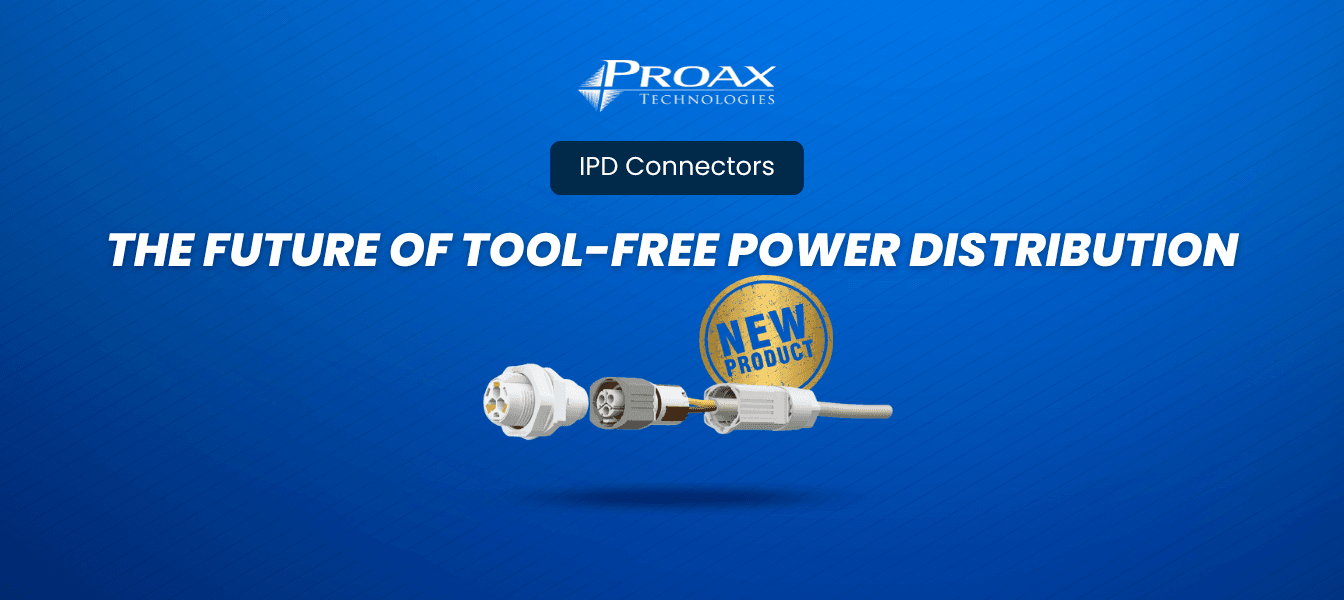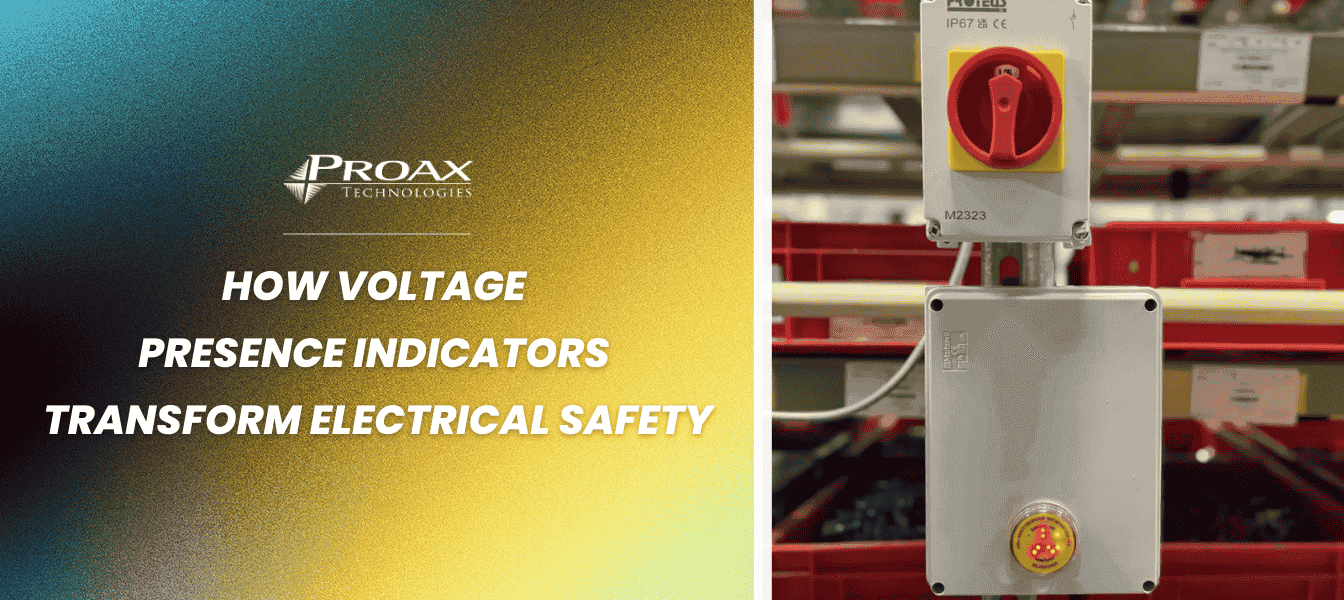Relays are essential components in electrical circuits, enabling control of one or more circuits by a low-power signal. Understanding relay contact configurations is crucial for selecting the appropriate relay for a specific application. This article explores the three primary contact forms—Form A, Form B, and Form C—with diagrams to illustrate their functionality.
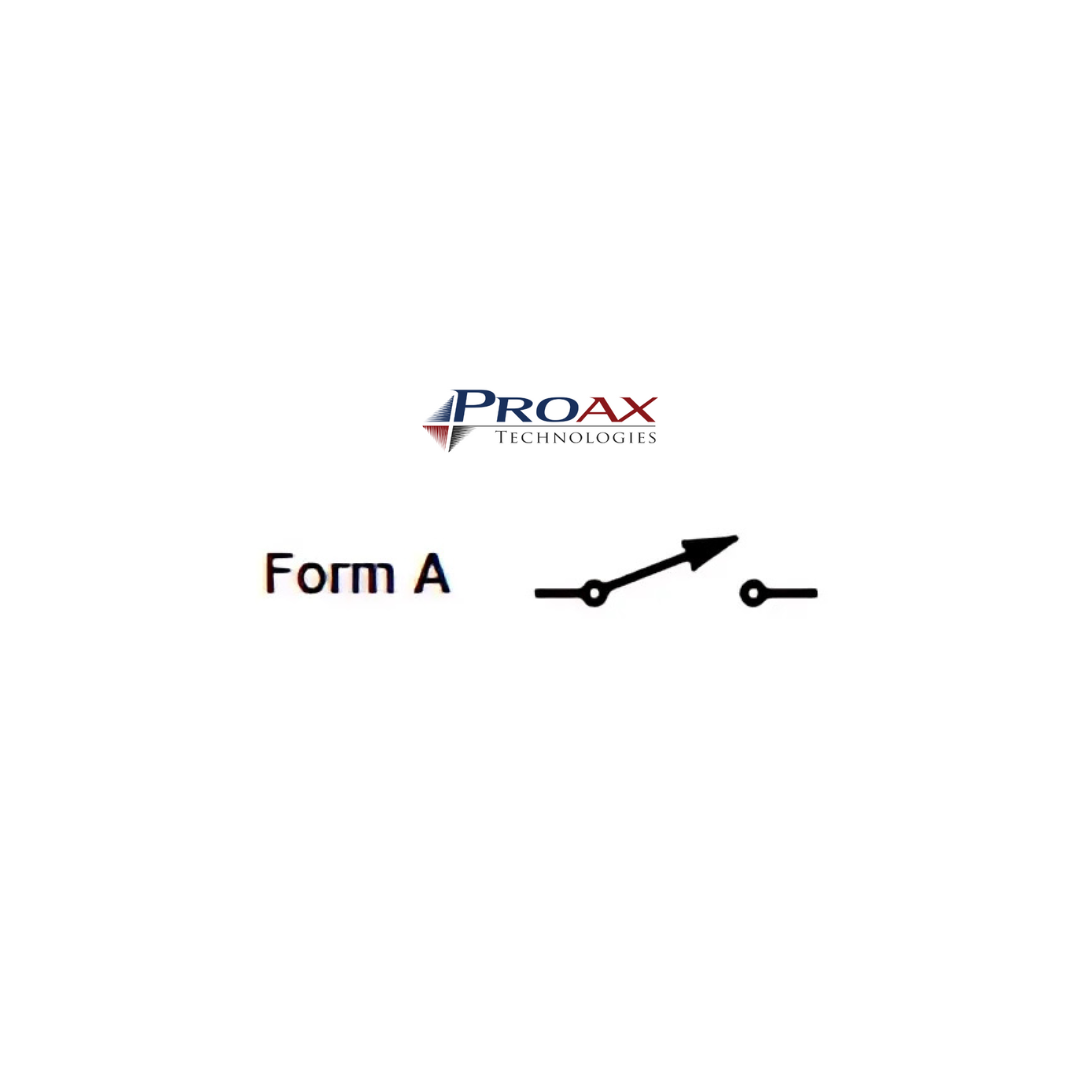
Form A: Normally Open (NO)
Definition:
Form A contact configuration refers to a Single Pole-Single Throw (SPST) normally open contact. In this arrangement, the circuit remains open (disconnected) when the relay is not energized. When the coil is energized, the contact closes, completing the circuit.
Applications:
- Used in circuits where the default state is "off" and activation connects the circuit.
- Commonly found in motor control, lighting systems, and process equipment.
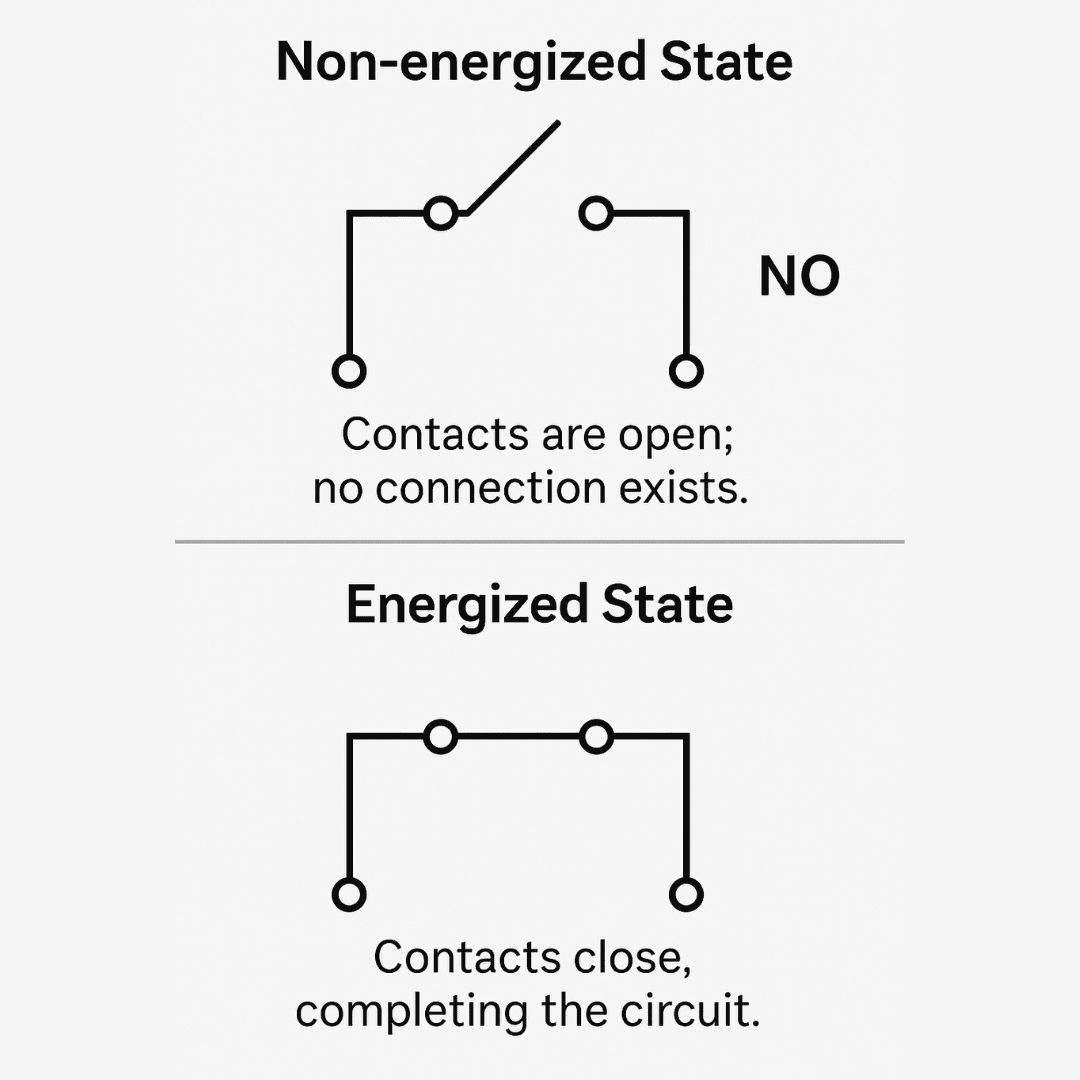
Diagram:
- Non-energized State: Contacts are open; no connection exists.
- Energized State: Contacts close, completing the circuit.
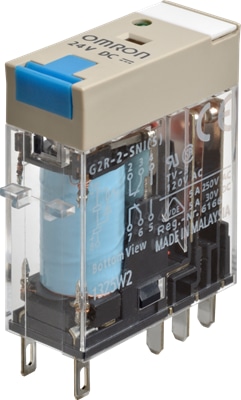
Omron's G2RS relay series offers reliable Form A configurations with space-saving design and clear mechanical indicators, ideal for interface applications.
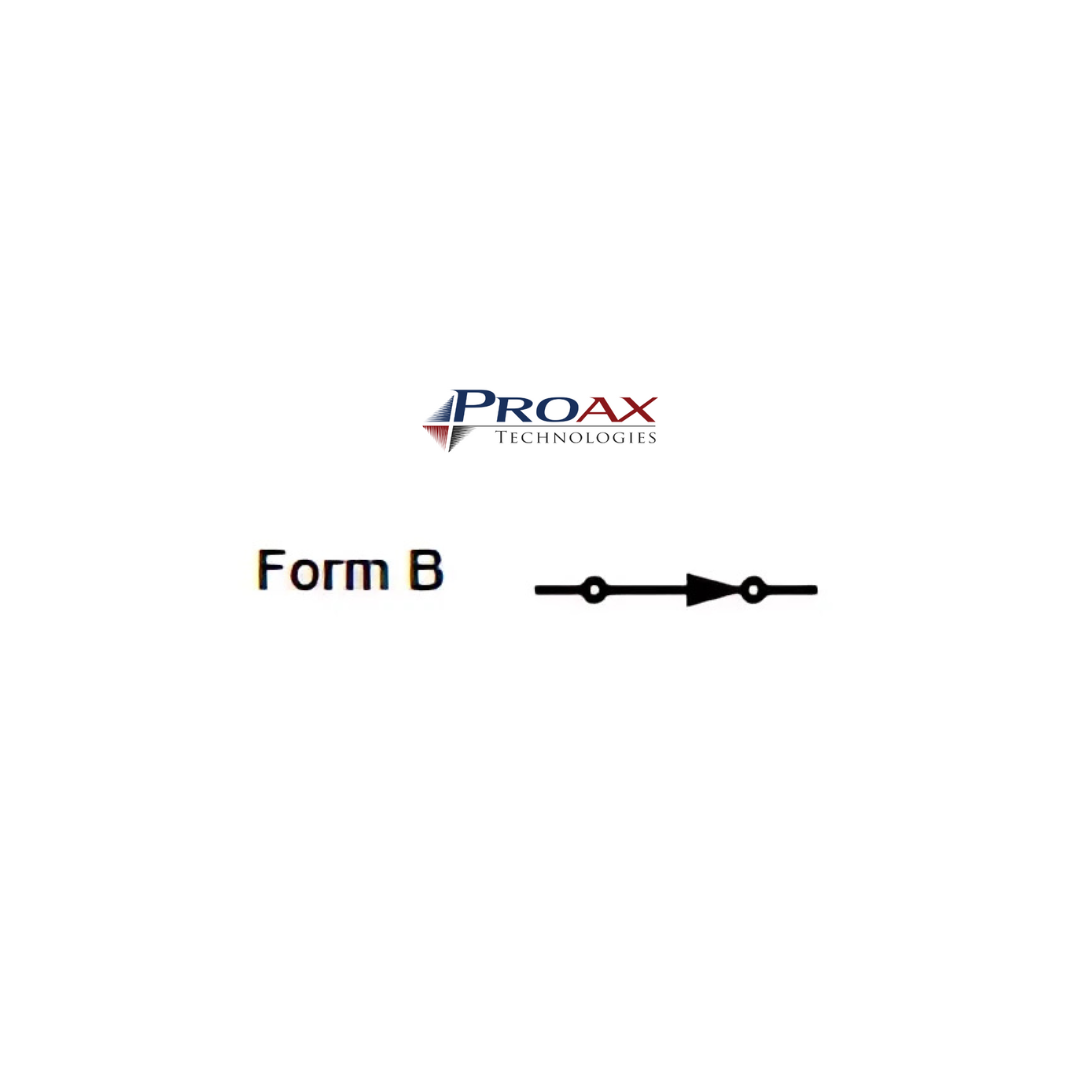
Form B: Normally Closed (NC)
Definition:
Form B contact configuration describes a Single Pole-Single Throw (SPST) normally closed contact. In this setup, the circuit remains closed (connected) when the relay is not energized. Energizing the coil opens the contact and disconnects the circuit.
Applications:
- Ideal for safety and monitoring systems where a break in the circuit triggers an action.
- Frequently used in emergency stop circuits and fault detection systems.
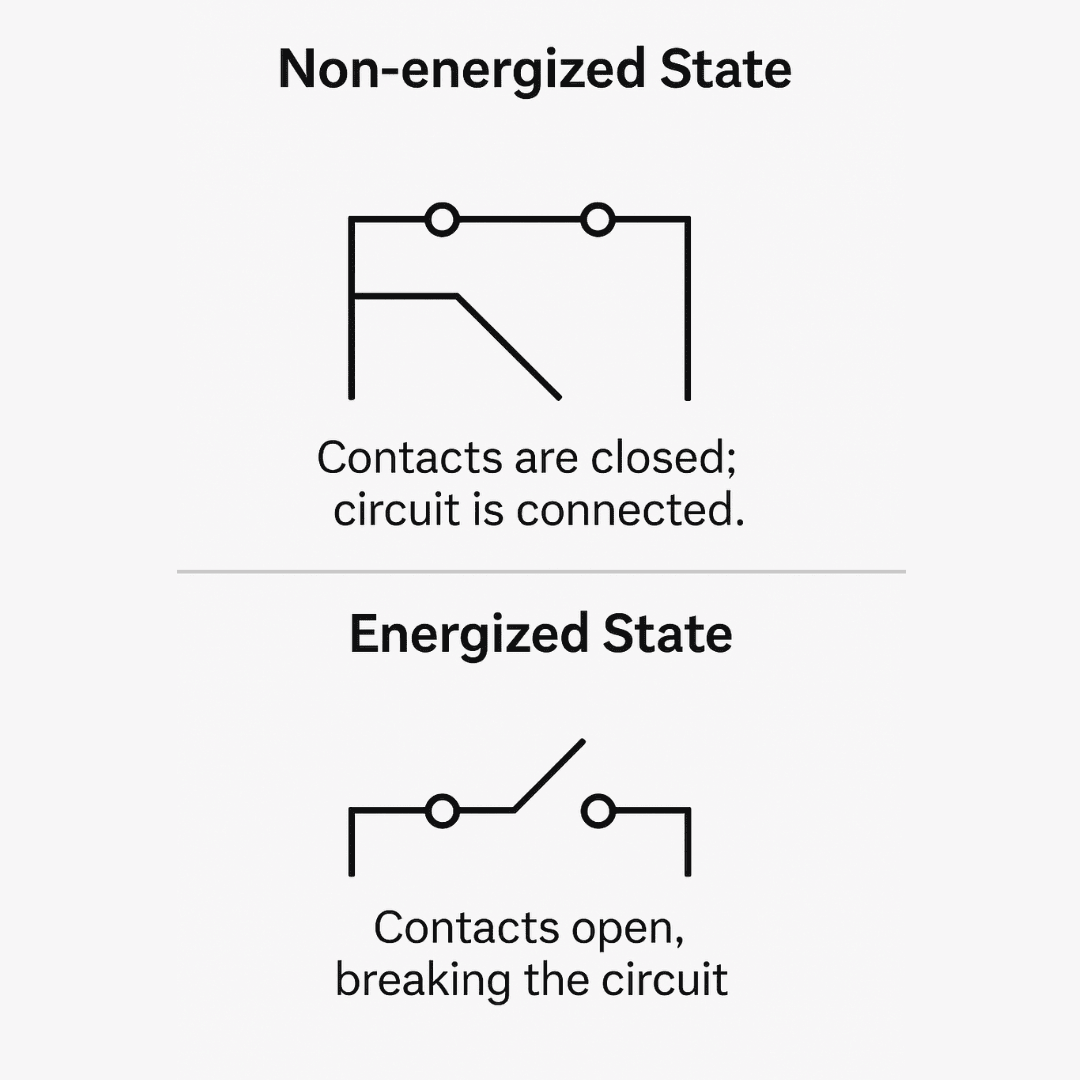
Diagram:
- Non-energized State: Contacts are closed; circuit is connected.
- Energized State: Contacts open, breaking the circuit.
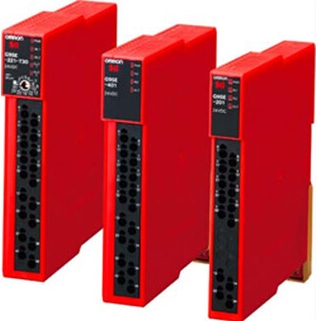
For critical safety applications, consider safety relays like Omron's G9SE series, which provide enhanced protection through monitored Form B contacts.
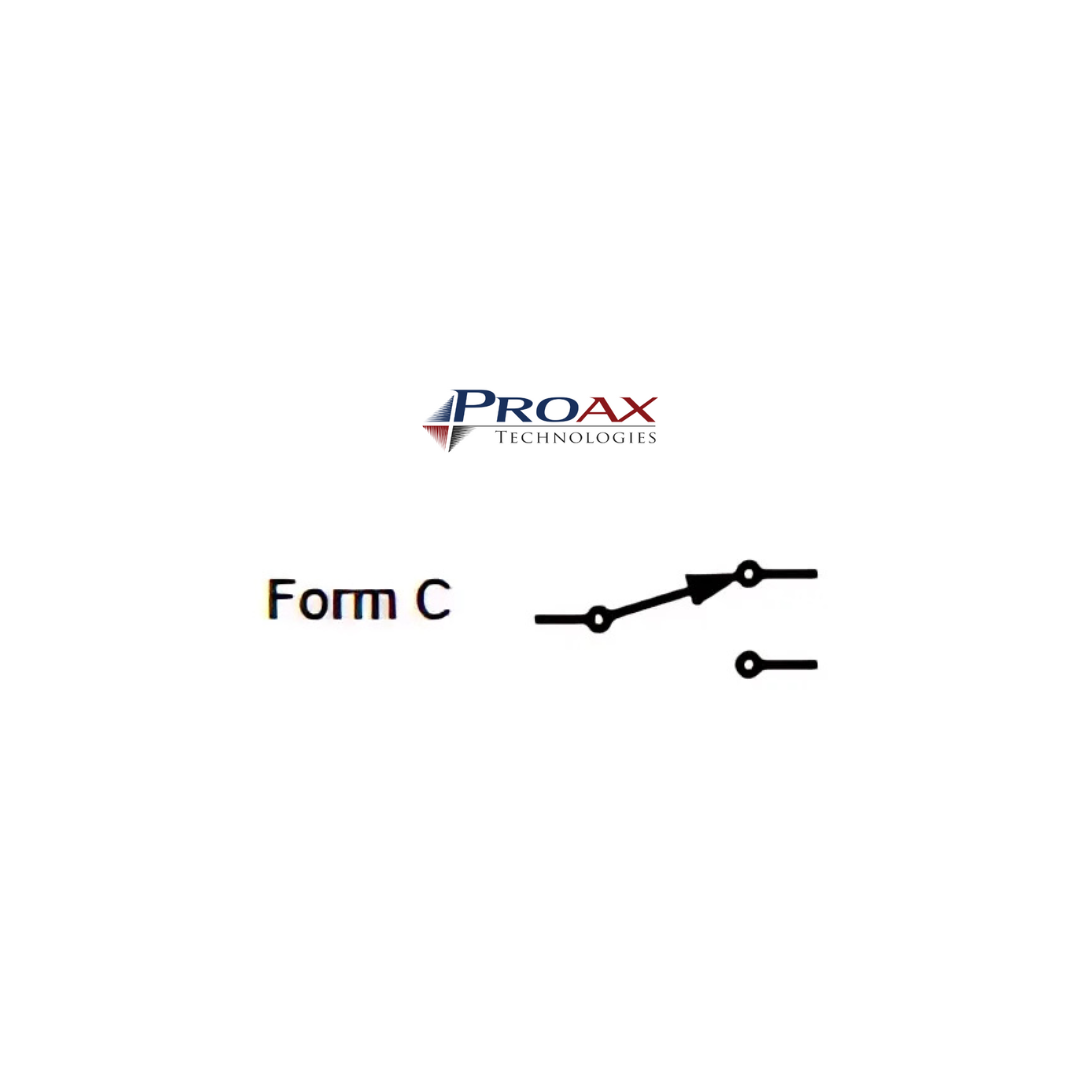
Form C: Changeover (SPDT)
Definition:
Form C contact configuration involves Single Pole-Double Throw (SPDT) contacts. This setup includes three terminals: one common terminal, one normally open terminal, and one normally closed terminal. When the relay is energized, the common terminal switches from connecting to the normally closed terminal to connecting to the normally open terminal.
Applications:
- Versatile for applications requiring switching between two circuits.
- Commonly used in automotive systems and industrial control panels.
Diagram:
- Non-energized State: Common terminal connects to the normally closed terminal.
- Energized State: Common terminal switches to connect with the normally open terminal.
Phoenix Contact's PLC-RSC series offers compact Form C relay modules that excel in industrial automation systems requiring reliable changeover functionality.
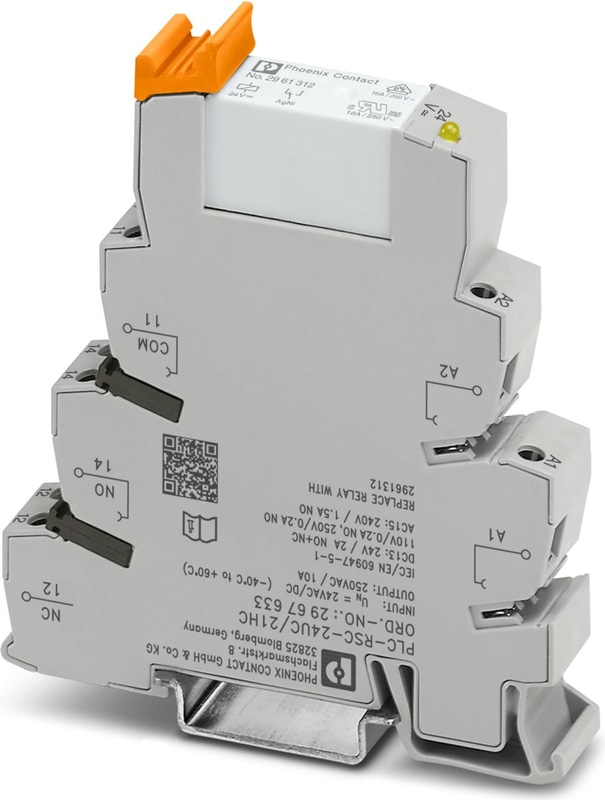
Comparison of Contact Forms
| Contact Form | Configuration | Default State | Energized State | Applications |
|---|---|---|---|---|
| Form A | SPST-NO | Open | Closed | Motor control, lighting |
| Form B | SPST-NC | Closed | Open | Safety systems |
| Form C | SPDT | NC connected | NO connected | Circuit switching |
Key Insights
- Versatility of Relays: Relays can feature multiple poles and contact configurations to suit complex applications. For high-capacity multi-pole requirements, Omron's G7J series offers reliable performance.
- Selection Criteria: Choosing between Form A, B, or C depends on whether your application requires a default open or closed state or switching capability.
- Common Variants: These configurations are widely used across industries like automation, automotive systems, and consumer electronics.
For applications requiring specialized relay types, explore our electromechanical relays or solid state relays for electronic switching without moving parts.
Understanding these configurations ensures optimal relay selection for your specific needs. Diagrams further clarify how these contacts operate in energized and non-energized states.
About Proax
As an authorized distributor with 13 strategic locations across Canada, Proax is your trusted local partner for industrial relay solutions. Our Canadian footprint includes major industrial centers like Toronto/Mississauga, Montreal, Vancouver, and Calgary. Our in-house technical team specializes in industrial automation components, including electromechanical relays, safety relays, and solid state relays for manufacturing applications.
Whether you need assistance selecting the right relay configuration for your Ontario manufacturing facility, implementing safety relay systems in Quebec's industrial sector, or sourcing specialized relay components for Western Canadian automation projects, our local experts are ready to help.
Contact us today for same-day support with your industrial relay needs. Our team is committed to providing personalized, local expertise for all your automation component requirements.












































